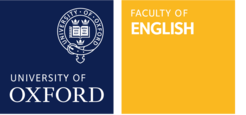Spotlight on Research: Chaucer Here and Now

Chaucer Here and Now, a major exhibition at the Bodleian Library, was opened on December 7th by Sir Ben Okri, and it runs until April 28th. I’ve curated this exhibition about Chaucer across time; about inspiration, creativity, and readers. It brings extraordinary medieval manuscripts and early printed books together with modern film, animation, cartoons, and contemporary poetry. Across time, Chaucer has been re-imagined in many different ‘heres and nows,’ made to fit changing expectations and tastes. The show is accompanied by a lavishly-illustrated book of essays about the ideas and themes of the exhibition.
The exhibition includes the oldest Canterbury Tales manuscript, the Hengwrt Chaucer, on loan from the National Library of Wales. It also showcases some of the most beautiful illuminated Chaucer manuscripts, alongside particularly gorgeous manuscripts of Dante and Boccaccio’s work. The first and second editions of the Canterbury Tales, printed by William Caxton in 1476 and 1483 are some of the most important early printed books in existence. William Morris’s Kelmscott Chaucer, perhaps the loveliest of all Victorian books, is another jewel, and there are also collections of Victorian children’s Chaucers, eighteenth-century Chaucerian ballads, and a cluster of translations into languages such as Ukrainian, Japanese, Farsi, Esperanto, German, Brazilian Portuguese, Russian, Hebrew, French, Korean, and Chinese.

The exhibition reveals that readers have always been actively responding to Chaucer’s texts. In the first case, three manuscripts are open at the same tale, Chaucer’s unfinished Cook’s Tale. While one scribe simply says that Chaucer did not finish the tale, another finishes it off for him, while a third adds a completely different tale (not by Chaucer) calling it a second Cook’s Tale. Early scribes and editors did not treat the text with reverence – indeed they had to make decisions about what to do with the unfinished texts that Chaucer had left behind.
In later centuries, translators and adaptors became concerned about Chaucer’s discussions of sex and the body, and censored his texts heavily. Pope’s translation of the Wife of Bath’s Prologue cuts out all the references to sex, the genitals, desire, and the body, leaving a short and fairly unrecognisable text. In the nineteenth century, the popular tales included the Clerk’s (about female submissiveness), the Knight’s (about chivalry and courtly love), the Nun’s Priest’s (an animal fable), and the Man of Law’s (female suffering again). The tales about farting, adultery, and sex in trees, were less popular. In contrast, in the twentieth-century, many readers focused exclusively on those fabliaux tales – the prime example being Pasolini’s film.
While in the nineteenth-century, Chaucer was seen as a poet of empire, whose texts should be sent out around the world to promote a certain kind of Englishness, in more recent decades, Chaucer has been reimagined as a poet of diaspora and refugees. The exhibition brings together the Refugee Tales volumes (from 2016 onwards), the records of a project whereby refugees and writers walk the pilgrimage route and tell their stories. Other texts that link Chaucer’s focus on travel and giving voice to diverse storytellers to modern diasporas include Jean ‘Binta’ Breeze’s translation of part of the Wife of Bath’s Prologue into Jamaican English, Marilyn Nelson’s Cachoeira Tales, which uses the Canterbury Tales as an inspiration for writing about the forced migration of enslaved people, and Zadie Smith’s Wife of Willesden which transposes the Wife of Bath’s Tale from Arthurian Britain to a community of Maroons (the descendents of formerly enslaved people) in eighteenth-century Jamaica.

This exhibition shows how the idea of Chaucer as the Father of English Literature developed, and became firmly established in sixteenth century printed editions, which featured dominating portraits of father Chaucer, positioned in such a way as to construct him as the Father of the Nation. This authoritative idea of Englishness elides the multilingual background of Chaucer’s own texts and life: the exhibition showcases Chaucer’s multilingual sources, his own translations, and his use of different languages in his texts. The global author of today – translated into many languages, and inspiring many writers from diverse backgrounds – is not so far away from the fourteenth-century traveller and diplomat.
The exhibition offers various ways to engage with Chaucer’s texts. You can put on headphones and watch some of the BBC animated Canterbury Tales. On the back wall, the opening couplet of the Tales is projected in multiple languages. Every seven minutes, a one-minute monologue is projected onto one wall: the Knight, Miller, or Wife of Bath, talks about themselves in modern English. And just outside the main exhibition, in the transept, there is a pilgrimage wall, with graphics of the pilgrimage route, onto which visitors are encouraged to stick their own pilgrim creations. Craft materials are provided, along with video tutorials by artists about how to draw Chaucer cartoons or make Chaucer puppets.
Students have been involved in various aspects of the exhibition: the review in the Times opened with discussing the area of the exhibition which features photos of current Oxford students and quotations about what Chaucer means to them. The journalist singled out the student who has a Chaucer tattoo on her forearm.
In his opening speech, Sir Ben Okri talked about the fundamental importance of Chaucer, saying that his work and ideas were like a river running underneath world literary culture. He walked on to the podium to the song ‘A Whiter Shade of Pale,’ which faded after the line ‘as the Miller told his tale.’ It was a great example of how Chaucer seeps into people’s consciousness, and continues to inspire poets, playwrights, artists, students, and all kinds of other people, from all over the world, in many different heres and nows. I hope people have fun in the exhibition, and that it surprises them.
— Professor Marion Turner
Marion Turner holds the J.R.R. Tolkien Chair of English Literature and Language at the University of Oxford. Her recent books include Chaucer: A European Life (2019) and The Wife of Bath: A Biography (2023).




